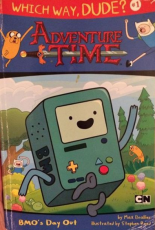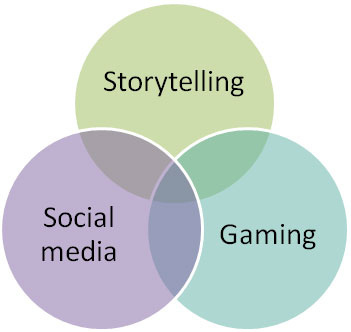After working on a creative writing project recently, there have been two text types related to technology that have caught my attention; Flash fiction and choose your own adventure/interactive story telling.
Flash fiction
The thing I like about flash fiction is the fact that your students can read from their phones. This means it's easy to use in class and might get them reading extensively. I tried some out ad hoc last week by pulling out the titles and doing a prediction exercise, then getting them to read different stories and report on what they had read and if they liked it. Now, I've asked them to write their own flash fiction and post it on our class wiki. Not quite sure where it will go but I will definitely get them to engage in peer-support/guidance to upgrade their language and develop effective creative writing techniques.

Interactive fiction
However, my main love is interactive stories, which I have already experimented with a bit with my classes. I love the idea of developing elements of collaborative gamification in my lessons through these types of text. Earlier this year, I got my students to storyboard on a poster and provide multiple paths with little paper flaps hiding the next part. They then tried their stories out on other groups. It could have easily been done with ppts, youtube videos using audio/video though.

Image source: https://c2.staticflickr.com/8/7415/10675839115_b265ea8369_b.jpg
There are lots of examples online where you are given a picture and you have to suggest what the character should do, the author then writes accordingly, or interactive stories where you can add your own ending. My original interest came from an activity I did at primary school withZORK. After playing the text based adventure game we mapped out the story and made a 'real' physical representation of the game with students acting as narrators at the story branches/nodes. Pretty cool for the 80s! Then last year I came across the Chad mat and rob youtube channel https://www.youtube.com/user/chadmattandrob. However, there isn't much linguistic complexity going on here, and a lot of shooting. It's funny though. Then I was introduced to this blog https://digitalalternatives.wordpress.com/ which led me to http://playspent.org/ . Spent combines story telling and gamification with social-awareness and fund raising. I suppose this is a type of serious gaming experience. I found the story quite depressing and got a bit freaked out when it suggested I ask a friend on Facebook for financial help. However, it's quite exciting to see the way storytelling, gaming and social media can be combined as the image below depicts.

Developing linguistically
In this story you are the main character, which is interesting and possibly engaging, but it does limit most of the narrative to present tense. In some ways the use of multi-media for storytelling might limit linguistic expression but it can also help with generating ideas and getting the ball rolling. I would like to try first using images, and then taking them away. This would help students get over the initial stumbling block then force(encourage) them to develop their text linguistically to make up for the subsequent lack of visuals. They could then re-introduce the images, of course. Just getting over writer's block or starting is difficult for a lot of writers, perhaps even more in L2, so anything that can help here is well worth it, even if it does initially act as a crutch and lead to more simplistic language. Once the bare bones of the story are there you can analyse the different aspects and gradually up-grade it through peer/teacher-support/guidance.

Featured image: https://c1.staticflickr.com/5/4150/4965977998_44b2e8af64.jpg
Adventure time Image source: https://c2.staticflickr.com/8/7415/10675839115_b265ea8369_b.jpg
No comments:
Post a Comment